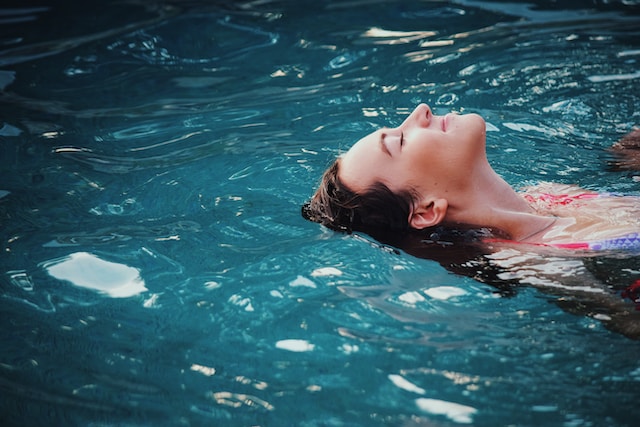Pain management and rehabilitation are crucial aspects of the healthcare continuum, allowing people to recover from injuries, surgeries or chronic conditions while improving their quality of life. Although traditional physical therapy and exercise programs are effective, they are not always well tolerated, especially by people with mobility problems or intense pain. This is where aqua therapy, a unique and refreshing approach, comes into the picture.
What is aqua therapy?
Aquatic therapy, known as aquatic therapy or hydrotherapy, is a specialized form of physiotherapy that takes place in a warm water pool, usually under the guidance of a trained therapist. The pool is typically heated to approximately 32-34 degrees Celsius (90-94 degrees Fahrenheit) to improve muscle relaxation and promote blood circulation. Aquatic therapy includes exercises, stretches and movements aimed at improving mobility, reducing pain and improving overall physical well-being.
What are the benefits of aqua therapy?
We have several benefits of aquatic therapy, including:
- Reduced impact – The main advantage of aqua therapy is that it minimizes the impact on joints and muscles. The buoyancy of water supports the body, reduces gravity and relieves pressure on bones, making it ideal for people with conditions such as arthritis, fibromyalgia or recovering from surgery.
- Pain relief – The soothing effects of the warm water can help relieve pain, spasms and muscle tension. The combination of gentle resistance and heat in aquatic therapy can also promote relaxation and reduce pain perception, making it especially valuable for people with chronic pain conditions.
- Improved range of motion – The resistance of water allows individuals to perform a wide range of movements and exercises that can be challenging on land. This helps improve flexibility and range of motion, essential for rehabilitation and recovery.
- Muscle strength – Aquatherapy can be used to strengthen muscles and improve overall fitness. Water resistance challenges the muscles without putting unnecessary strain on the joints, making it an effective way to regain strength after an injury.
- Improved balance and coordination – The support of the water provides a safe environment to work on balance and coordination, which is crucial for preventing falls and regaining stability, especially for the elderly or those with neurological disorders.
- Cardiovascular benefits – Aquatic therapy can also provide cardiovascular benefits by improving circulation and endurance. Exercising in water is a gentle way to get the heart pumping without straining the body.
Which conditions are treated with aqua therapy?
Aquatic therapy can benefit a wide range of conditions, including:
- Orthopedic injuries
- Arthrosis
- Rheumatoid arthritis
- fibromyalgia
- Chronic pain
- Postoperative rehabilitation
- Neurological disorders (e.g. stroke, multiple sclerosis)
- Spinal cord injury
- Sports injuries
- Obesity management

What are the disadvantages of aqua therapy?
Aquatic therapy, as a generally safe and beneficial form of treatment, generally has few side effects. However, it is essential to take into account the following possible side effects or considerations:
- Skin irritation – Prolonged exposure to pool water can sometimes lead to skin irritation or dehydration. To alleviate this, it is recommended to shower before and after aqua therapy and apply a moisturizer if necessary.
- Slip and fall – The pool area can be slippery, which can increase the risk of accidents, especially for people with mobility problems. Adequate precautions, such as non-slip mats and handrails, must be in place to prevent falls.
- Infections – Although the chlorine in pool water helps with disinfection, there is still minimal risk of exposure to water-borne infections. Make sure the pool is properly maintained and chlorinated to minimize this risk.
- Overload – It is essential to work with a qualified aquatic therapist who can tailor the exercises to your specific needs. Overload can lead to muscle pain or fatigue.
- Temperature sensitivity – Some individuals may be sensitive to warm water temperatures. Make sure the pool temperature is within a comfortable range (usually around 32-34°C) to avoid overheating or discomfort.
- Allergic reactions – Persons with allergies or sensitivities should be careful with the chemicals and cleaning agents used in the pool. These chemicals can sometimes cause skin irritation or breathing problems in sensitive individuals.
Getting started with aqua therapy
Follow these steps to start your journey to aquatic therapy:
- Consult a healthcare provider – Before starting a new rehabilitation program, consult your healthcare provider or physiotherapist to determine if aquatic therapy is a suitable option for your condition.
- Find a qualified aquatic therapist – Look for a certified aquatic therapist or a rehabilitation center with a pool dedicated to aquatic therapy. They will guide you through the right exercises and monitor your progress.
- Set realistic goals – Discuss your rehabilitation goals with your therapist and create a personalized plan that meets your specific needs.
- Provide regular sessions – Consistency is key in aquatic therapy. Attend your scheduled sessions and follow the prescribed exercises and activities closely.
Aquatherapy is a refreshing and effective approach to pain relief and rehabilitation. The unique combination of warm water, buoyancy and expert guidance from therapists can provide numerous benefits, such as reduced pain, improved mobility and better overall well-being. If you’re looking for an alternative to traditional land-based physical therapy or simply want to improve your physical health in a gentle way, consider trying aqua therapy. Remember that you should always consult your doctor before starting a new therapy program to ensure that it is the right choice for your individual needs.
Reference:
Evidence-based treatment of aquatic physiotherapy in the rehabilitation of orthopedic upper limb injuries. Watts KE, Gangaway JM. Journal of Aquatic Physiotherapy 2007; 15(1): 19-26.
Effects of an aquatic physiotherapy program on respiratory parameters in people with Parkinson’s disease.Yamaguchi B, Iucksch DD, Paladini LH, Israel VL.Parkinsons Dis. August 31, 2022; 2022: 2073068. doi: 10.1155/2022/2073068. eCollection 2022.PMID: 36091655
Effects of different exercise therapies on balance function and functional walking ability in patients with multiple sclerosis – a network meta-analysis of randomized controlled trials. Hao Z, Zhang X, Chen P.Int J Environ Public Health Research. 2022 Jun 11;19(12):7175. doi: 10.3390/ijerph19127175.PMID: 35742424
Does aquatic physiotherapy affect the rehabilitation of breast cancer in women? A systematic review and meta-analysis of randomized controlled trialsS. Wang J, Chen X, Wang L, Zhang C, Ma J, Zhao Q.PLoS One. August 3, 2022;17(8):e0272337. doi: 10.1371/journal.pone.0272337. eCollection 2022.PMID: 35921372
Generalized and regional soft tissue pain syndromes. The role of physicians in physical and rehabilitation medicine. The European perspective based on the best evidence. A paper from the professional practice committee of the UEMS-PRM section. Oral A, Ilieva EM, Küçükdeveci AA, Varela E, Valero R, Berteanu M, Christodoulou N. Eur J Phys Rehabil Med. 2013 Aug;49(4):535-49.PMID: 24084413





